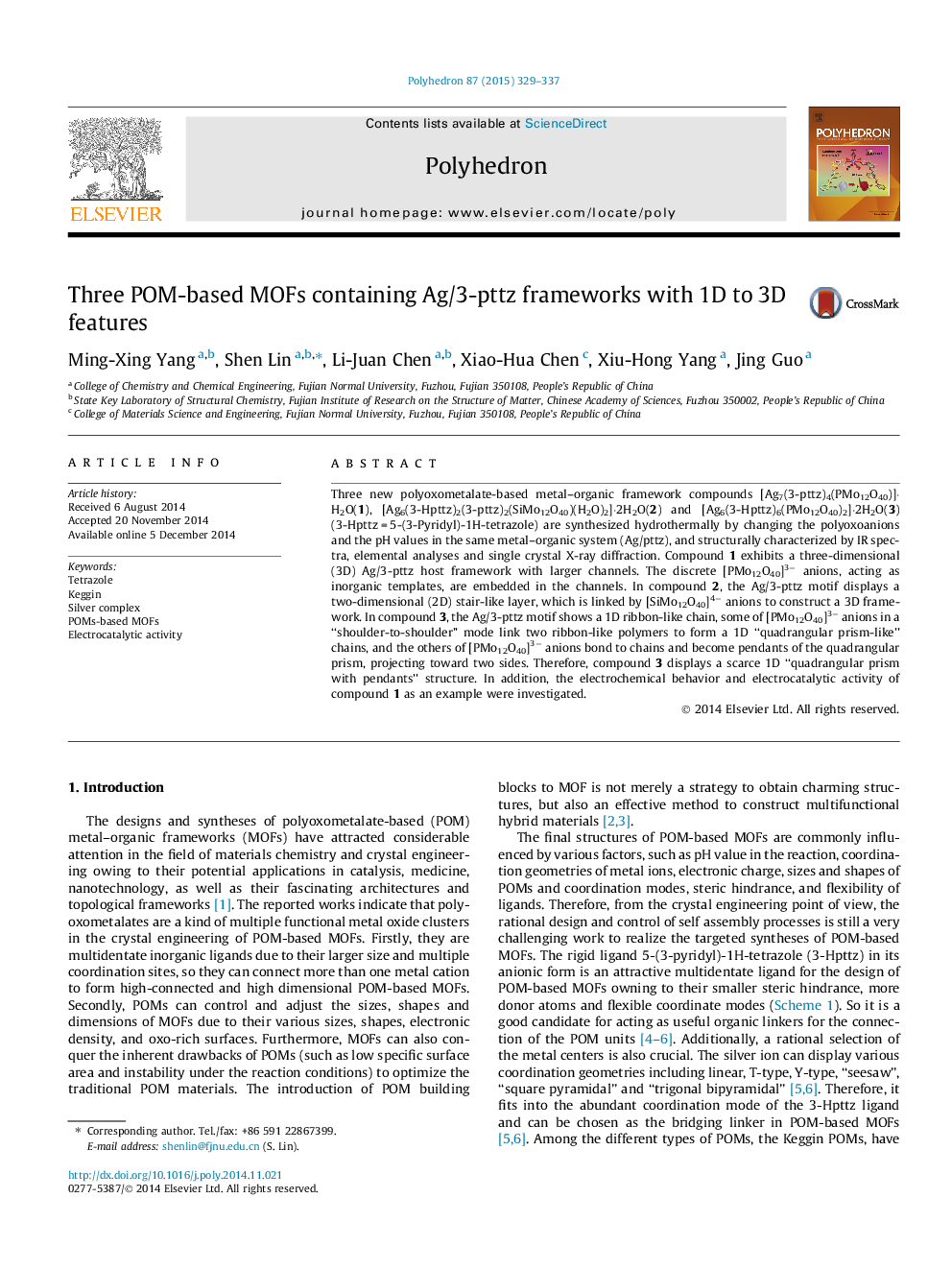| Article ID | Journal | Published Year | Pages | File Type |
|---|---|---|---|---|
| 1337374 | Polyhedron | 2015 | 9 Pages |
Three new polyoxometalate-based metal–organic framework compounds [Ag7(3-pttz)4(PMo12O40)]·H2O(1), [Ag6(3-Hpttz)2(3-pttz)2(SiMo12O40)(H2O)2]·2H2O(2) and [Ag6(3-Hpttz)6(PMo12O40)2]·2H2O(3) (3-Hpttz = 5-(3-Pyridyl)-1H-tetrazole) are synthesized hydrothermally by changing the polyoxoanions and the pH values in the same metal–organic system (Ag/pttz), and structurally characterized by IR spectra, elemental analyses and single crystal X-ray diffraction. Compound 1 exhibits a three-dimensional (3D) Ag/3-pttz host framework with larger channels. The discrete [PMo12O40]3− anions, acting as inorganic templates, are embedded in the channels. In compound 2, the Ag/3-pttz motif displays a two-dimensional (2D) stair-like layer, which is linked by [SiMo12O40]4− anions to construct a 3D framework. In compound 3, the Ag/3-pttz motif shows a 1D ribbon-like chain, some of [PMo12O40]3− anions in a “shoulder-to-shoulder” mode link two ribbon-like polymers to form a 1D “quadrangular prism-like” chains, and the others of [PMo12O40]3− anions bond to chains and become pendants of the quadrangular prism, projecting toward two sides. Therefore, compound 3 displays a scarce 1D “quadrangular prism with pendants” structure. In addition, the electrochemical behavior and electrocatalytic activity of compound 1 as an example were investigated.
Graphical abstractThree POM-based MOFs containing 1D to 3D Ag/3-pttz coordination polymers were successfully synthesized by changing kinds of inorganic salt which containing the center element of the Keggin heteropolymolybdate and pH values.Figure optionsDownload full-size imageDownload as PowerPoint slide
